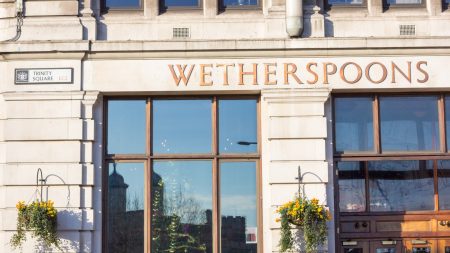The UK government is implementing a new tax strategy aimed at revitalizing struggling high streets by leveling the playing field between online retail giants and traditional brick-and-mortar businesses. This strategy centers on the introduction of a new tax levied on large distribution warehouses, often referred to as the “Amazon tax,” with the revenue generated being used to fund permanent business rate cuts for smaller businesses in the retail, hospitality, and leisure sectors. This move is intended to alleviate the disproportionate burden of business rates on physical stores, which have struggled to compete with the lower overhead costs of online retailers. The government argues that this redistribution of tax burden is a fair approach to supporting local businesses and fostering a more vibrant high street environment.
The proposed tax changes, set to take effect from April 2026, will specifically benefit over 23,000 pubs, 21,000 restaurants, and numerous other retail and leisure businesses. These sectors, traditionally vital components of thriving high streets, have faced immense pressure from the rise of e-commerce and the changing consumer landscape. The government believes that reducing their business rates will provide much-needed financial relief, enabling them to invest in their operations, improve their offerings, and compete more effectively. Ultimately, the hope is that these measures will encourage foot traffic and revitalize the cultural and economic heart of local communities.
However, the introduction of the “Amazon tax” has sparked criticism and concerns. Detractors argue that the cost of this new tax will ultimately be passed on to consumers through higher prices for online goods. This, they contend, could negate the intended benefits for high street businesses, as consumers may be deterred by increased online prices and choose to shop less overall. Furthermore, critics question the efficacy of the tax in truly leveling the playing field, arguing that the complexities of the retail landscape require a more comprehensive and nuanced approach than simply shifting tax burdens.
Despite these concerns, James Murray, the UK tax minister, has defended the government’s approach. He argues that the current system of business rates places an unfair burden on traditional high street businesses, putting them at a significant disadvantage compared to their online counterparts. He emphasizes that the new tax structure is designed to address this imbalance and create a fairer competitive environment. Mr. Murray believes that by providing much-needed tax relief to struggling high street businesses, the government can stimulate growth and revitalize these vital community hubs. He further contends that the revenue generated from the “Amazon tax” will be instrumental in achieving this goal.
In addition to the “Amazon tax” and business rate cuts, the government has also implemented an increase in employers’ national insurance contributions. This move, outlined in the recent budget, has further fueled debate and anxiety, particularly among small businesses. Many fear that this increase will add to their already strained finances, hindering their ability to hire and grow. However, Mr. Murray has defended the rise in national insurance contributions, framing it as a necessary, albeit difficult, decision within a larger budgetary strategy. He maintains that the overall budget aims to address broader economic challenges and pave the way for sustainable growth.
In summary, the UK government’s new tax strategy represents a significant attempt to address the declining state of high streets and support traditional businesses in the face of increasing competition from online giants. The introduction of the “Amazon tax” and the corresponding business rate cuts are designed to level the playing field and revitalize local economies. However, concerns remain regarding the potential impact on consumers and the overall efficacy of the strategy. The government insists that these measures are essential for creating a fairer and more vibrant retail landscape, while critics argue that a more holistic and nuanced approach is necessary to address the complex challenges facing high streets in the 21st century. The debate surrounding these tax changes highlights the ongoing tension between supporting traditional businesses, fostering a competitive market, and ensuring affordability for consumers in the rapidly evolving world of retail.











